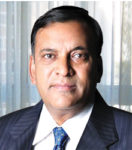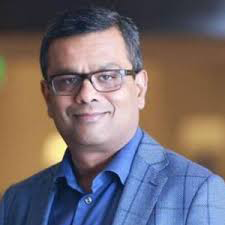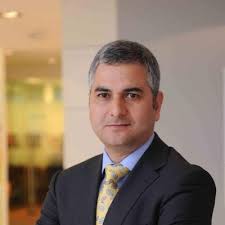Events
Desh Ki Digital Udaan- Episode 2
In the second episode of the webinar series, Desh Ki Digital Udaan, a panel of industry experts discussed the future of mobility in India and the new technologies to look out for. The webinar was organised by COAI in association with DoT. The participants were Akhil Gupta, Deputy Group CEO, Bharti Enterprises Limited; Nitin Bansal, Managing Director, India Head-Networks, Market Area South East Asia, Oceania and India, Ericsson; Badri Gomatam, Chief Technology Officer-Telecom, Sterlite Technologies Ltd; Randeep Raina, Chief Technology Officer, Nokia Networks; Digvijay Sharma, Senior Director Sales, Ciena; and Jonathan Homa, Senior Director of Solutions Marketing, Ribbon Communications, with KG Purushothaman, Partner, Telecom Sector Leader, KPMG India as the moderator. Lt. Gen. Dr. SP Kocher DG, COAI delivered the welcome address. Communications Today was one of the media partners.
 SP Kocher
SP Kocher
“I am so glad that the prime minister has taken it upon himself to make some declarations from the ramparts of Red Fort this year and said that we are going to roll out a huge amount of fiber and reach each and every village within thousand days. In addition to that there are some policies that he has announced like the cyber policy which is going to affect telecom rollout in a major way. The next 25 years are expected to be even more exciting as the country has big plans for mobility and data inclusion.”
 Akhil Gupta
Akhil Gupta
“The future of the telecom industry is bright and there is a great potential. This is an ever evolving industry, and we are at the doorsteps of 5G. This industry needs huge capital investments, we need to keep on expanding networks. In order to do that, there are a couple of things that need to be done.
The government will need to walk the talk. They would have to now start living the fact, that they need to keep minimum pricing on spectrum. Perhaps they could look at a situation, where instead of equated yearly instalments for spectrum payments, there is a ballooning payment/increasing payments, over the years. As the network gets established and the revenue streams start coming in, maybe the annual instalments can keep increasing.
If the operators themselves do not maintain the discipline on pricing, the regulator would need to step in. While all the stakeholders support free pricing and laissez-faire, the regulator must look to ensure financial health of the industry.
Right of way is another important factor, on which a lot of work is being already done by DoT and the state governments.
Also, there is no reason why this industry continues to be taxed 18 percent GST, virtually the highest slab.
I think these rationalizations need to take place. With these I am very confident and optimistic that we are going to play a second innings, which is going to be even brighter, and even more successful than what we had in the first 25 years.
This is an industry which the nation depends on, generating a lot of employment and capital formation. It is the duty of all the players, whether in passive infrastructure sharing, which anyway should also move on to active sharing, operators, the government, or the regulator, to make the industry financially healthy once again. Collectively, we must all ensure that, as we go forward, India remains and leads the world in telecom evolution.”
 Nitin Bansal
Nitin Bansal
“During this period of coronavirus, we at Ericsson, together with the service providers been continuously working hard to ensure that connectivity works well in this time of need. The mobile networks in India are proving yet again that they can deliver the performance and reliability to support the society in this hour of need. Smartphones and 4G have already transformed the way we communicate, consume and live. With 5G, we are entering the next generation of mobile communications. coupled with an array of other new technological solutions, like internet of things, edge computing, artificial intelligence and machine learning, 5G is powering the fourth industrial revolution without any doubt.
Based on our experience, at Ericsson, we see 5G having a huge impact across different industries, and playing an increasing role across business applications and throughout society. We see a lot of potential for 5G connecting multiple devices and ecosystem in India.
We have also demonstrated a few of these as an industry partner.
We need to come together and make sure we are able to use 5G in an effective way to solve the problems in India. The time to act is now.”
 Badri Gomantam
Badri Gomantam
“With the advent of upcoming technologies such as AI, AR/VR and IoT, the market and enterprise customers are also expected to transform. On how the industry handles this change, the market will grow and transform.
I see a fairly energetic drive in getting the connectivity elements of the radio technologies, the associated software stacks and hardware stacks out in the market as quickly as possible. There is a robust momentum toward 5G.
The number of connected devices is expected to exponentially increase, and the industry is preparing for it by investing in both, the fundamental silicon technologies to advance the cause of intelligence edge computing and bringing the compute stack closer to the endpoints of connectivity and driving that into a much more sophisticated way to create business analytics and bring it at a much lower latency. This will improve the decision-making criteria at a significantly better cost profile.”
 Jonathan Homa
Jonathan Homa
On what kind of use cases are you seeing on the implementation of IoT, especially when it comes to future of mobility?
“We recently sponsored a study specifically in the area of gaming. One of the interesting statistics that we saw is, that active gamers have not only increased their usage from 3.5 hours pre-COVID to 4.5 hours post-COVID, but also the kind of devices they use, those devices that they can eventually control on other parts of the network. Another major application which would go along with IoT is e-health. It would be self-monitoring diagnostics from home, at one end of the spectrum, and remote surgeries at the other. When we put the findings together, we saw that the users were willing to pay more for better services in the network. Out of 5000 gamers, and this is worldwide, 60 percent of them said that they would pay 50 percent more for a better connectivity service than they have today.
Between those two applications of gaming and e-health, we see major changes taking place in the way the network will be used.
Taking this one step further, we will no longer be able to have a network where one size fits all. When there are more people willing to pay more for different levels of service for different applications, we need to be able to take this common infrastructure, and create stratification of that, so that it is a win-win for both, the consumer and the telephone companies providing the services. Right now, companies as Amazon and AWS have different strata of customers, who pay for different levels of service. We are will have to move to a similar model in the telephone company world too.”
 Randeep Raina
Randeep Raina
On how the ecosystem itself will change and how it will ultimately benefit the customer.
“Network automation and service orchestration will now come forward much more effectively than in the recent past. To connect the billion devices, a touchless provisioning and a seamless migration of new platforms would be needed. A service orchestration layer, on top of the connective layer, will ensure that there is a frictionless adoption of IoT services, applications and use cases. This will have to be managed completely, with an end-to-end, seamless connectivity, and a proper system integration of the devices. The application, physical and security layers will have to be provisioned and created in this.”
 Digvijay Sharma
Digvijay Sharma
On how cloudification of network architecture is going to change the landscape for the telecom industry and the future of mobility going forward .
“Cloudification gets you away from physical infrastructure. The key aspect IoT and 5G is how faster you reach to the cloud. In the current context, the device is connected to a tower, then to the access device, then to a city aggregation, to regional aggregation and core and then to internet, where the cloud resides. Robotics, remote surgery and various IoT-related applications would require very low latency. And for that the cloud would need to move to the edge, i.e. mobile edge computing would bring into play, another new dynamic, the overall architectural aspect and how the networks would be laid. The key role of cloud here is changing.
To come back to the original point, cloud gives a lot of scale and flexibility and the capacity that you see in public clouds is enormous. Instances as servers crashing in peak sale periods for Amazon or Flipkart no longer happen. The elasticity of scale provided by cloud helps handle the complexity that comes with IoT. The cloud moving to the edge provides immersive experience around AR and latency to certain applications like driverless cars.”
CT Bureau














You must be logged in to post a comment Login